This post was written by Peter Seltzer ’19, Andrew Oliveri ’19, Maura Kalil ’19, and Matt Iacobucci ’19
At the beginning of the academic year, Finance professor Dr. Chuck Schnitzlein introduced an opportunity for us all to spearhead the first Sustainable Innovation MBA impact investing project. The goal of the project was to show the University of Vermont Treasurer’s office how to build a short-duration fixed income impact portfolio that meets its fiduciary and financial constraints.
Given these parameters, our challenge was to build a portfolio comprised of socially and environmentally responsible fixed-income investments that would contribute to making a positive global impact in the areas of our choosing. A group of thirteen Sustainable Innovation MBA students* have been working collaboratively to come up with investment criteria to build out this potential portfolio of bonds for consideration. Through working closely with Chuck, the Sustainable and Responsible Investing Advisory Council (SRIAC), and the UVM Treasurer’s Office, we are now positioned to make our recommendations to the investment manager to implement this strategy.
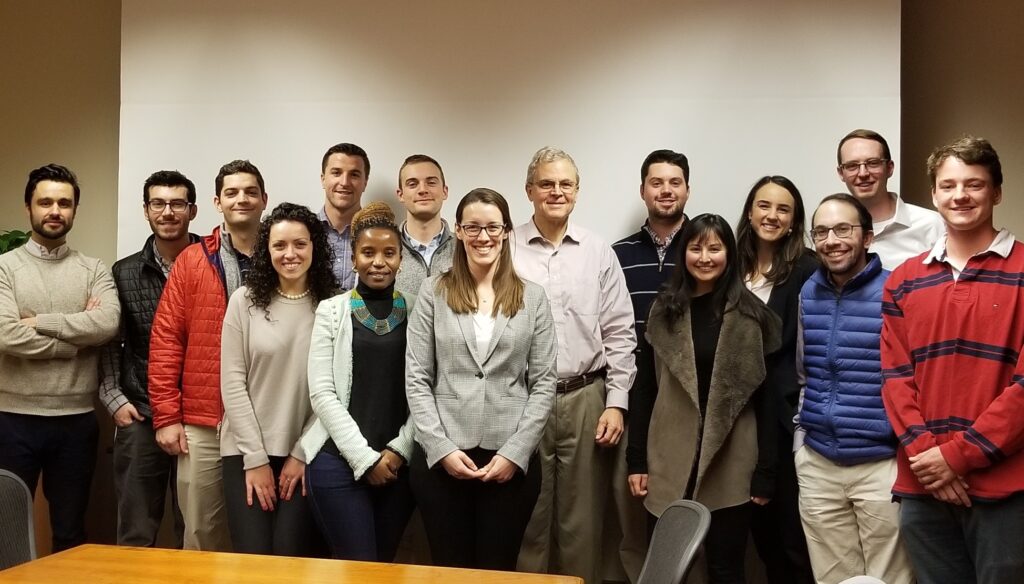 *Andrew Mallory, Andrew Oliveri, Alyssa Schuetz, Alyssa Stankiewicz, Esteban Echeverria-Fernandez, Emily Klein, Keil Corey, Maura Kalil, Matt Iacobucci, Noelle Nyirenda, Peter Seltzer, Ryan Forman, Tor Dworshak (in no particular order — EDITOR)
*Andrew Mallory, Andrew Oliveri, Alyssa Schuetz, Alyssa Stankiewicz, Esteban Echeverria-Fernandez, Emily Klein, Keil Corey, Maura Kalil, Matt Iacobucci, Noelle Nyirenda, Peter Seltzer, Ryan Forman, Tor Dworshak (in no particular order — EDITOR)
Coming into The Sustainable Innovation MBA program, many of us were novices to the emerging field of impact investing. To build our knowledge and immerse ourselves in this new subject, we began organizing and attending weekly learning sessions. Our resources have included articles and research tools, but most significantly, the book The Impact Investor by Jed Emerson, a prominent leader in this field. These resources provided the foundation for our impact investing toolkit that has aided us in determining our impact objectives and screening criteria for the project. Next, we had to learn the tools that investors use to search for and make judgments on assets in real-time.
We trained ourselves to use the Bloomberg terminal, a powerful tool for investors in providing access to real-time financial data. Each member of the impact investing team completed the built-in Bloomberg Market Concepts digital learning tutorial, with particular attention focused on fixed income securities to build out our general investing toolkit. While identifying whether each bond under consideration held the financial metrics needed to fulfill the fiduciary obligations required of the portfolio for the University, we also used the ESG terminal function to help objectively measure the non-financial impact that each bond holds. The ESG function provides non-financial Environmental, Social, and Governance metrics for companies and bonds, which proved to be an invaluable tool for our research process.
While the whole impact investing team was expected to have a solid understanding the “impact” side of the equation, a subgroup of the team has been taking additional advanced finance classes with Chuck on fixed income investing and portfolio management to master the “investing” side. There, this subgroup has been learning key concepts to help the whole team take the next steps towards building a portfolio that is financially sound and well up to the University’s investing standards. This diversification within our team allows for an overall focus on portfolio impact, while the more specialized subgroup could also incorporate the principles of a financially successful portfolio that was consistent with the investment policy statement and integrated impacted criteria.
During our early coursework in The Sustainable Innovation MBA, we learned how many companies have been aligning their business models and sustainability initiatives with the United Nations’ Sustainable Development Goals (SDG). Thus, we wanted to incorporate the concept of impact learned through the program’s curriculum to maximize our portfolio’s impact. As a group, we brainstormed SDGs that were not only important to us but those in which we saw the most potential for global impact. From that list, we selected three SDGs that we determined were best aligned with UVM’s mission and brand image: Clean Water & Sanitation, Affordable & Clean Energy, and Gender Equality.
The first SDG we focused on was ensuring the availability and sustainable management of water and sanitation for all. We looked to find issuers who not only decreased their water usage relative to competitors but also considered the ‘usage relative to revenue’, which was found to be a helpful feature of the Bloomberg terminal. Similarly, it was important for us to find issuers who not only were mitigating negative impacts but rather having a positive impact with regard to clean water stewardship efforts. With a number of UVM students intimately connected to Lake Champlain and its surrounding ecosystems, we realize clean water to be a paramount goal of our investment council.
The second SDG we focused on was ensuring access to affordable, reliable, sustainable and modern energy for all. We determined that impact within this goal can be derived from companies producing sources of clean, affordable and renewable energy, as well as companies sourcing their energy from renewable providers. Companies that our investment council considers for investing need to be making investments in clean technology and energy efficiency, or investments in affordable energy storage technology. In addition, a company meets our criteria if they have a large green power purchase agreement, or is in a contract to source a majority of their energy from a clean, renewable energy source.
The third and final SDG we focused on was achieving gender equality and empowering all women and girls. This SDG was particularly important to our group as many of our group members are part of The Sustainable Innovation MBA Women For Change group on campus. The team developed the following three objective criteria that the corporations offering the bonds should meet for portfolio consideration: female representation in senior management (at least 33%), proven efforts to create equal opportunity for female employee advancement, and women in leadership (CEO, Founder, Chair of the Board).
The thirteen of us have learned much through the process of working on this project, and we are grateful for Chuck, SRIAC, and the UVM Treasurer’s Office for the opportunity. This was a completely voluntarily effort outside of the regular class schedule and curriculum of our academic program. We are fortunate to acknowledge that the dedication of time and effort towards this project has rewarded the members of our team with a new degree of fluency in the field of impact investing and perhaps even more rewarding, a feeling of accomplishment for having the potential to make an impact in alignment with the SDGs and UVM.
We look forward to taking the next steps with this project and seeing how the recommendations of our team might be utilized by the University and beyond. As we have with this project, we are excited to continue finding new ways to incorporate our learning from each and every subject we are exposed to here in The Sustainable Innovation MBA program, building out our sustainable innovation toolkit even further as we progress into the new year.
Onward!

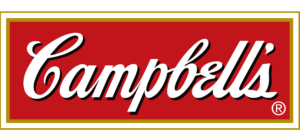 According to Innovator-in-Residence Dave Stangis, Chief Sustainability Officer at Campbell Soup Company, organizations go through phases when implementing sustainable practices which he called “Sustainability 1.0, 2.0, and 3.0.” Beginning his career at Intel as an Environmental, Health and Safety External Affairs Manager, Stangis’s initial role transformed into Director of Corporate Sustainability where he spearheaded corporate social responsibility and sustainability strategies in response to growing societal concerns of Intel’s environmental, social and economic impact. From there, Stangis’s growing passion for business and sustainability landed him a job at Campbell’s, where he has developed and led the firm’s widely known CSR, ESG and sustainability strategies.
According to Innovator-in-Residence Dave Stangis, Chief Sustainability Officer at Campbell Soup Company, organizations go through phases when implementing sustainable practices which he called “Sustainability 1.0, 2.0, and 3.0.” Beginning his career at Intel as an Environmental, Health and Safety External Affairs Manager, Stangis’s initial role transformed into Director of Corporate Sustainability where he spearheaded corporate social responsibility and sustainability strategies in response to growing societal concerns of Intel’s environmental, social and economic impact. From there, Stangis’s growing passion for business and sustainability landed him a job at Campbell’s, where he has developed and led the firm’s widely known CSR, ESG and sustainability strategies. Leading with Kenneth was a formal 2-credit course with two exams, some reflection papers, hundreds of slides and a daily-
Leading with Kenneth was a formal 2-credit course with two exams, some reflection papers, hundreds of slides and a daily-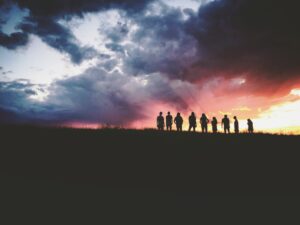 Leading for Sustainable Innovation ended up being one of my favorite classes. Seeing a familiar concept fleshed out, explained in depth, proved (through student testimonials, personal reflections and long-standing industry theories) to then understand it on a deeper level and be able to apply it in the world around me. It was great. There were several few high-level takeaways from this course, but I keep the following flashcard(s) in my backpack while the others have made their way into the recycling bin.
Leading for Sustainable Innovation ended up being one of my favorite classes. Seeing a familiar concept fleshed out, explained in depth, proved (through student testimonials, personal reflections and long-standing industry theories) to then understand it on a deeper level and be able to apply it in the world around me. It was great. There were several few high-level takeaways from this course, but I keep the following flashcard(s) in my backpack while the others have made their way into the recycling bin.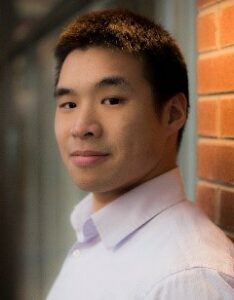 I’ve been searching for an MBA program for quite some time, but was having difficulty finding one I was excited about until I cam across The Sustainable Innovation MBA program. I knew that I wanted to incorporate sustainability components into my career, so this program felt like the perfect fit for me.
I’ve been searching for an MBA program for quite some time, but was having difficulty finding one I was excited about until I cam across The Sustainable Innovation MBA program. I knew that I wanted to incorporate sustainability components into my career, so this program felt like the perfect fit for me.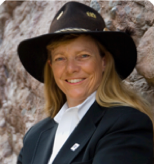 Earlier this Fall we had the pleasure of hosting guest speaker
Earlier this Fall we had the pleasure of hosting guest speaker  I wanted to continue working in a field that made a positive impact in our communities and on the world in general and felt the the private sector was the right place to move into, but I wanted — and needed — to expand my professional toolkit first.
I wanted to continue working in a field that made a positive impact in our communities and on the world in general and felt the the private sector was the right place to move into, but I wanted — and needed — to expand my professional toolkit first. Many of UVM’s 13 colleges and schools are at the forefront in their respective fields of research. In 2016, UVM received
Many of UVM’s 13 colleges and schools are at the forefront in their respective fields of research. In 2016, UVM received 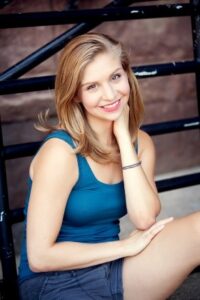 I chose this program for its welcoming, collaborative environment and because I wanted learn the questions to ask and tools to use to make business better. I also love knowing that I will be back out in the world in less than a year, better equipped to make a difference!
I chose this program for its welcoming, collaborative environment and because I wanted learn the questions to ask and tools to use to make business better. I also love knowing that I will be back out in the world in less than a year, better equipped to make a difference! Despite these amazing numbers, almost everyone has experienced a time when our brain seems small; incapable of remembering simple things, and incapable of performing simple tasks. This happens to almost everyone, including the brilliant minds of UVM’s Sustainable Innovation MBA students.
Despite these amazing numbers, almost everyone has experienced a time when our brain seems small; incapable of remembering simple things, and incapable of performing simple tasks. This happens to almost everyone, including the brilliant minds of UVM’s Sustainable Innovation MBA students.